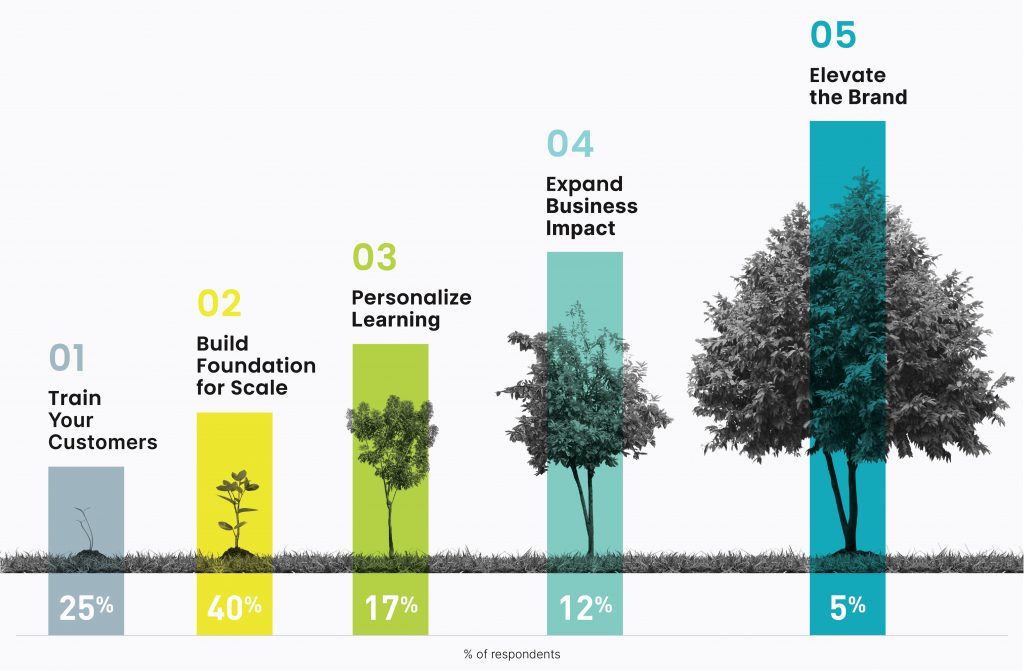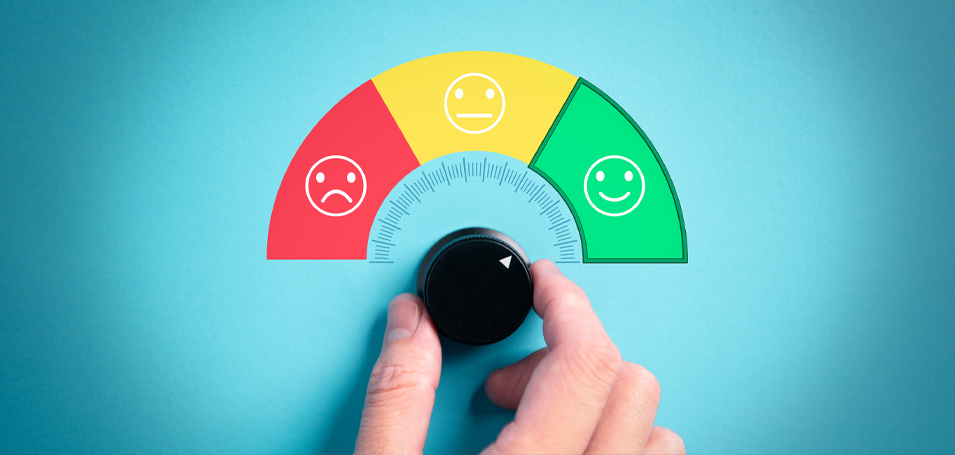Our recent webinar saw our CEO Barry Kelly sit down to talk to research and consulting firm Talented Learning with its CEO and co-founder John Leh, alongside Andrea Seal, Digital Strategist for Product Enablement at Forcepoint. The all-star panel discussed digital customer learning, and how harnessing the latest technologies can impact critical business results, supporting teams in hitting goals such as expansion, retention, adoption and more.
If you missed the webinar, you can catch an exclusive rebroadcast of the event, or keep reading for some highlights!
Prioritizing Customer Experience Drives 3x More Revenue Growth
Today’s businesses are more interested in learning technologies than ever before. John discussed how customer learning can be used for early engagement efforts such as attracting customers and marketing, all the way through to onboarding, helping customers reach time to value faster, and then supporting them in becoming brand advocates and increasing lifetime value (LTV).
Personalization, AI, and automation are all increasingly important in this endeavor, especially as training moves online. Of course, the pandemic has accelerated this, with 77% of programs saying the shift to online learning is highly important, and 41% having moved in-person training to VILT with no plans for a return to the classroom. 57% have expanded their training since COVID-19 began, and 42% offer new kinds of content which they didn’t pre-pandemic. It’s clearly not only about more content, it’s about better content, too – which can best happen through digital customer learning tools and transformation.
Essentially, by moving training online, you can make customer learning measurable. You can track product adoption, renewal rates, satisfaction rates and truly see how digital customer education is driving business success.
The Maturity Model: Measuring Program Success Across 5 Stages
Barry discussed the Thought Industries Maturity Model, the product of over 50 in-depth interviews with customer education programs at varying levels of success, across organizations running the gamut in terms of revenue and number of employees. The Thought Industries team talked to these experts about their challenges, their best practices, their strategic frameworks and their program successes. They were asked, what obstacles do they have in the way of their maturity, and what tested solutions have they tried and found value with?
Using this data, the Thought Industries team was able to map maturity across 5 levels and understand each component, from simply showing up and training your customers, all the way through to using learning to elevate your brand through cutting-edge learning experiences that educate the market.

At stage 1, the point to understand is that every organization has to spend time training customers and onboarding them. For Barry, at the start he remembers 70% of the work he was doing was training customers, and how the onus was on everyone to make that happen, from Sales and Marketing, to Support and Product. At this stage, there are so many different customer touchpoints which all give you feedback on gaps and challenges. Barry called out two types of businesses at this stage: those that are used to in-person training and want to scale that through digitization, and those who are finding they are unable to customize to meet individual needs.
At stage 2, customer education programs are building foundations for scale. They may have initial learning platforms up and running, and they are looking to free up time for CSMs who are having the same conversations over and over again. They recognize that digital initiatives could move the needle, however they don’t necessarily know the details of how that should work, who should have ownership and so on. There are a wide range of companies at different levels of stage 2, where digital adoption is growing in varied ways.
Next, at stage 3, organizations begin to personalize learning. Analysis and deeper measurement will begin to become much more important, and this is the point where Barry says that we often see customers come to us and say that their LMS isn’t fit for purpose, as they now have a deeper understanding of what they need.
A new layer of digital sophistication comes into place with stage 4, as you can see in this clip from Barry, below.
Finally, we have stage 5, which is going to be aspirational for most companies today. This is all about new ways to monetize learning, driving demand generation through customer learning, and new technological innovation.
Of course, as Barry points out – not everything is linear. There can be companies who have achieved parts of stage 3 and not others, or who are stage 2 companies who have already implemented monetization, which is usually linked to a deeper maturity.
Four Mindsets of Successful Customer Learning Leaders
After a discussion on the barriers that arise for customer education programs as they grow, Andrea spoke about her own digital transformation journey – diving into how leveraging technology supported the business with scale. Bringing up four attitudes that the Forcepoint team leans on, she discussed:
- Thinking backwards: Especially in SaaS products, often people think “I have this great product, how can I teach people to use it?” when really they should think “Who are my customers and what do they need to know?” If you’re not sure what your customers need to know, working out who your customer segments are and what they need to achieve success is an important step discussed in The Customer Education Playbook, which outlines 12 steps from setting goals to measuring ROI.
- Using A Whole-of-Org Learning Strategy: Bring everyone in the organization in as a contributor to content. Marketing and Sales have great existing assets, so look further than your own team to get the support you need.
- Building an Engine, not a Backlog: Andrea admitted it was hard to move training into an Agile way of working! Creating an MVP for learning isn’t easy, but she assured the audience that it can be done, and gave some actionable tips for getting there.
- Focusing on Change Management: The key to this mindset is to over-communicate. Make sure people understand that things will change often – after all, this is a SaaS product.
Measuring the Value of Digital Customer Learning in Practice
We loved the differentiation that Andrea makes between digital transformation and digital transitions. While digital transition is taking an existing piece of content and putting it into the digital realm so that it can be reused, true transformation to digital customer learning means changing the education experience to make it into a digital, dynamic, more immersive one.
With this approach, Forcepoint was able to increase renewal rates and upsells by 24.5% when training is complete compared to those who purchased and didn’t use the training. Andrea said that this data allowed them to support their value of over-communication, engaging with the customer and ensuring they are consuming the content, not just purchasing it.
They also sped up the time it took to provide product training to 2 days before the launch of new products, by syncing the product roadmap tightly with the content roadmap, so that education content was available and ready to go early before a product had launched, rather than chasing to keep up with customer needs after the fact.
Finally, and what Andrea called most important, Forcepoint found that partners are 7 times more likely to call technical support if they are not certified. There is so much information for partners, but it’s about making sure they can access that information and can be trained.
This incredible panel had too much knowledge to fit into a single recap! Register here to watch a full replay, and discover:
- A more in-depth look at the Thought Industries maturity model, and the barriers to innovation at each stage of the journey.
- How to make learning into a commercial experience which provides value to the customer, and critically – how to measure the value of that experience to the business.
- A Forcepoint case study of targeting partners who submit the most tickets, training them, and thereby cutting their ticket submissions in half.




